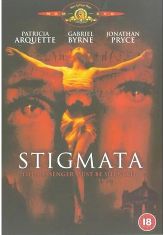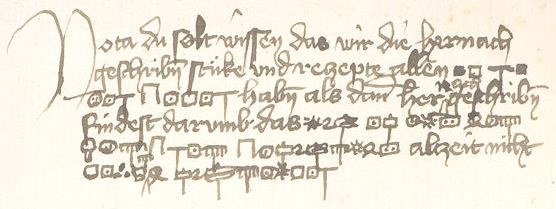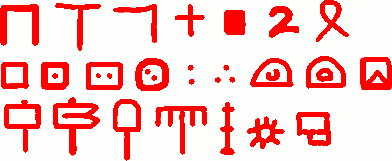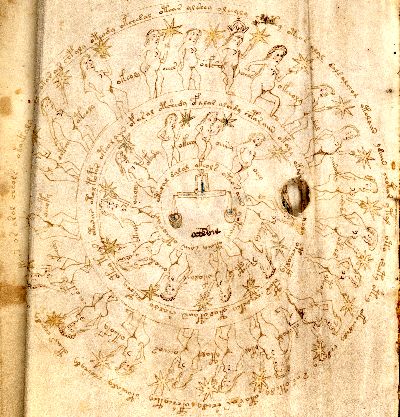Once upon a time (in 1518), a Venetian called Giovanni Agostino Pantheo put himself into hot water by writing a work on alchemy (the Ars Transmutationis Metallicae). Yet essentially unrepentant, he went on to publish (in 1530) a further book on alchemy called the Voarchadumia Contra Alchimiam: this was largely a reprise of his 1518 book but dressed in additional historical garb for an air of antiquity and authority. Yet given that his word “Voarchadumia” was a mash-up of Hebrew and Chaldean (meaning something vaguely about making gold), it has to be said that Pantheo’s take on history was probably no less spurious than his artificially-constructed title.
Still, the Voarchadumia covers languages, alchemy, metallurgy, and various other topics: intriguingly, the well-regarded alchemy expert Adam McLean is currently working on a translation of it, and plans to be finished by the end of this year. Probably because it is currently only in Latin, the Voarchadumia seems to be one of those books which people often claim to have read, but which in fact they have only read about. Which makes it fertile soil for the weed-like seeds of misremembered half-stories to flourish in…
For example, the two most-repeated tales about the Voarchadumia concern its influence on John Dee: in one, Dee’s (1564) Monas Hieroglyphica symbol allegedly appeared first in the Voarchadumia, while in the other, Dee’s Enochian alphabet allegedly appeared first in the Voarchadumia. Are these true?
Well… it’s certainly true that Dee had his own copy of the Voarchadumia (which is now in the British Library, complete with Dee’s annotations!) However, having just gone through a scan of a 1550 edition of Voarchadumia, I can say that the first story seems just flat wrong (though please tell me if the symbol appears in a different edition!), while Dee’s angelic alphabet (though note that Dee didn’t actually call this “Enochian”) similarly fails to make any obvious appearance there.
Even so, what does appear on leaves 15v and 16r in Pantheo’s Voarchadumia, however, is an alphabet attributed to Enoch (“Antiquiores autem hi:& concessi Enoch“, to be precise) which has many visual similarities to Dee’s Enochian in its stroke structure and stylistics… even if none of the actual glyphs does actually match. Saying that the two are the same would be an easy mistake to make if you weren’t being careful.
A further angelic alphabet (marked “Angelicum“) appears in James Bonaventure Hepburn’s (1573-1620) early 17th century Virga Aurea, which contains 70 secret or ancient alphabets: Adam McLean discussed this alphabet in The Hermetic Journal in 1980, and even translated the (tiny) amount of text on the engraving depicted beside it. Even Athanasius Kircher subsequently wrote on angelic languages!
But angelic languages first appeared prior to the Voarchadumia, both in Trithemius’ Steganographia Polygraphia (where the prototypical stylistic blend of Arabic and Ethiopic lettering common to these Angelic Alphabets seems to have emerged first) and in Agrippa’s three Coelestis, Malachim, & Transitus Fluvii alphabets – according to Wikipedia, the Transitus Fluvii alphabet first appeared a decade before Agrippa (you may also have seen this in the Blair Witch Project!) It has been claimed that Pantheo formed the Voarchadumia’s second alphabet by munging together these three Agrippan alphabets, with fairly sensible historical reasoning, I’d say.
All in all, it should be clear that Dee did not invent the idea of an angelic or Enochian language – but then again, neither did Pantheo. And furthermore, I don’t believe that angelic languages were common in Dee’s time – though this runs contrary to the Wikipedia Enochian page, which cites Tobias Churton’s [very enjoyable] book “The Golden Builders” as support (but I can’t find any substantial reference there at all). My own reading of the evidence is that the notion of talking to angels in their own angelic language (for that was their purpose) was no more than a marginal, post-rationalized (if affectedly pious) Renaissance reworking of the kind of nigromancy still widespread in the Trecento and Quattrocento.
And so for me, the central issue about Dee is whether he was using the notion of angelic language in a fully necromantic sense (as modern occultists believe, following Aleister Crowley et al), or in a fully steganographic sense (pace Trithemius and possibly Agrippa), or perhaps some kind of epistemologically-confused mix of the two. This is hugely tricky and contentious, because it goes right to the heart of Dee’s entire Renaissance project – i.e. was he scientific or occult? Did Casaubon really have any right to label Dee a Faustian conjuror?
What do you think?






